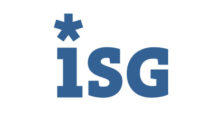How the Smart Office should bring employees back into the office
The home office has become extensively popular in recent years. Employees don’t see the necessity to come to the office because their home office is just as well equipped. Companies now want to bring their employees back to the office with the innovative “Smart Office”.
As employees become more mobile and connected as a result of digitalization, many people like to stay at home to work. However, with today’s project methods and feedback rounds, the physical presence of all employees, but above all the decision-makers, is often important. But in order to attract employees back to the office, companies must make their employees’ workplaces attractive again.
What should the Smart Office offer?
Every employee wants a work place specially designed for him or her. Above all, the provision of the necessary software applications is essential for efficient work. In a study on the digital workplace of the future, the Information Services Group (ISG) has now confirmed that Unified Communications as a Service (UCaaS) is in particular demand in the Smart Office. In recent years, mobile and networked applications have fundamentally changed the way people work, which will now also be evident in the office. In the future, unified communications and collaboration solutions will become increasingly universal and tailored to collaboration in international, rapidly changing teams – from sharing, changing and filing documents to conference solutions and presence management.
Study highlights advanced vendors
In the study conducted by ISG, certain providers of Unified Communication and Collaboration Services were also positioned, including Vodafone and Fuijitsu. The positioning is as follows.

In addition to its positioning in “Unified Communication and Collaboration Services”, ISG analyzed seven other submarkets. These included Digital Workplace Consulting Services, Digital Workplace Managed Services and Enterprise Mobility Management Services, as well as Virtual Desktop Services.
The Workplace as a Service (WaaS), Unified Endpoint Management Solutions and Enterprise Mobility Management Solutions were also considered.
The complete contribution of the Information Services Group can be found here.
[plista]


